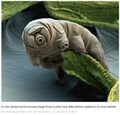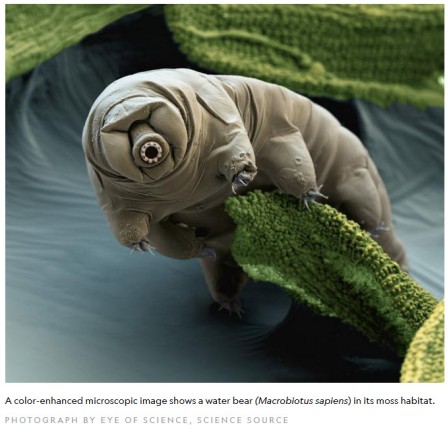File:Tardigrade.jpg
Tardigrade.jpg (448 × 431 pixels, file size: 47 KB, MIME type: image/jpeg)
What is a tardigrade?
Tardigrades are microscopic eight-legged animals that have been to outer space and would likely survive the apocalypse. Bonus: They look like adorable miniature bears. Around 1,300 species of tardigrades are found worldwide. Considered aquatic because they require a thin layer of water around their bodies to prevent dehydration, they’ve also been observed in all kinds of environments, from the deep sea to sand dunes. Freshwater mosses and lichens are their preferred habitat, hence their nickname, moss piglet.
Despite looking squishy, tardigrades are covered in a tough cuticle, similar to the exoskeletons of grasshoppers, praying mantises, and other insects to which they are related. Like those insects, tardigrades have to shed their cuticles in order to grow. They have four to six claws on each foot, which helps them cling to plant matter, and a specialized mouthpart called a bucco pharyngeal apparatus, which allows them to suck nutrients from plants and microorganisms.
Tiny and tough
Tardigrades belong to an elite category of animals known as extremophiles, or critters that can survive environments that most others can't. For instance, tardigrades can go up to 30 years without food or water. They can also live at temperatures as cold as absolute zero or above boiling, at pressures six times that of the ocean’s deepest trenches, and in the vacuum of space.
Their resiliency is in part due to a unique protein in their bodies called Dsup—short for "damage suppressor"—that protects their DNA from being harmed by things like ionizing radiation, which is present in soil, water, and vegetation. Another amazing survival trick is cryptobiosis, a state of inactivity triggered by a dry environment. The micro-animals squeeze all the water out of their bodies, retract their heads and limbs, roll up into a little ball, and become dormant. When conditions improve, they unfurl themselves and go about their business.
There it is...
Science, chaos, control... Michael Crichton's mind at work
~
File history
Click on a date/time to view the file as it appeared at that time.
| Date/Time | Thumbnail | Dimensions | User | Comment | |
|---|---|---|---|---|---|
| current | 14:01, 24 June 2020 |  | 448 × 431 (47 KB) | Siterunner (talk | contribs) |
You cannot overwrite this file.
File usage
The following 2 pages use this file:
